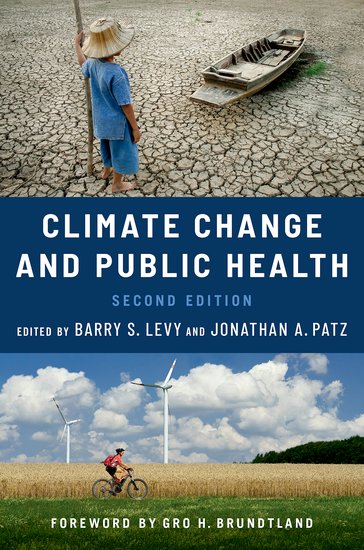Promoting Health Through Nature-Based Climate Solutions
Citation
Frumkin, H., Shane, B., & Schottland, T. (2024). Promoting Health Through Nature-Based Climate Solutions. In Climate Change and Public Health, 360-384. Oxford University Press. https://doi.org/10.1093/oso/9780197683293.003.0017
Nature-based climate solutions use the power of nature to help address climate change. These approaches can reduce carbon emissions, pull carbon dioxide out of the air, help communities adapt to a changing climate, and make ecosystems and people more resilient in the face of a changing climate.
Examples include restoring forests, protecting coastal wetlands, improving soil health, and adding more green spaces in cities. When done well, these actions not only help the planet but also provide many extra benefits, like cleaner air and water, improved health, and better quality of life.
However, if they’re not carefully planned, nature-based solutions can have unintended negative effects, such as harming local communities or ecosystems. That’s why it’s important to design and manage them thoughtfully.
This chapter looks at how nature-based climate solutions can be used in cities, rural areas, and wildlands. It also examines the tradeoffs, policies, funding tools, communication strategies, and equity issues involved. Special sections explain how ecosystems provide essential services to people and explore how many trees the Earth can realistically support.
Abstract
 Nature-based climate solutions represent a set of strategies and tools that can help mitigate carbon emissions, remove carbon dioxide from the atmosphere, promote adaptation to climate change, and build resilience. They need to be implemented as part of an integrated set of climate actions. They aim to accomplish specific mitigation and adaptation goals effectively, economically, and safely. They deliver a wide range of co-benefits, including co-benefits for health and well-being. Nature-based climate solutions can cause unintended and even harmful consequences, and therefore need to be carefully planned, implemented, and managed. This chapter explores nature-based climate solutions in cities as well as in rural and wildland areas. It discusses tradeoffs, policy levers, economic levers, communications, and equity considerations that arise in implementing nature-based climate solutions. The chapter also includes a textbox on ecosystem services and nature’s services to people, and a textbox on the number of trees that the world can support.
Nature-based climate solutions represent a set of strategies and tools that can help mitigate carbon emissions, remove carbon dioxide from the atmosphere, promote adaptation to climate change, and build resilience. They need to be implemented as part of an integrated set of climate actions. They aim to accomplish specific mitigation and adaptation goals effectively, economically, and safely. They deliver a wide range of co-benefits, including co-benefits for health and well-being. Nature-based climate solutions can cause unintended and even harmful consequences, and therefore need to be carefully planned, implemented, and managed. This chapter explores nature-based climate solutions in cities as well as in rural and wildland areas. It discusses tradeoffs, policy levers, economic levers, communications, and equity considerations that arise in implementing nature-based climate solutions. The chapter also includes a textbox on ecosystem services and nature’s services to people, and a textbox on the number of trees that the world can support.